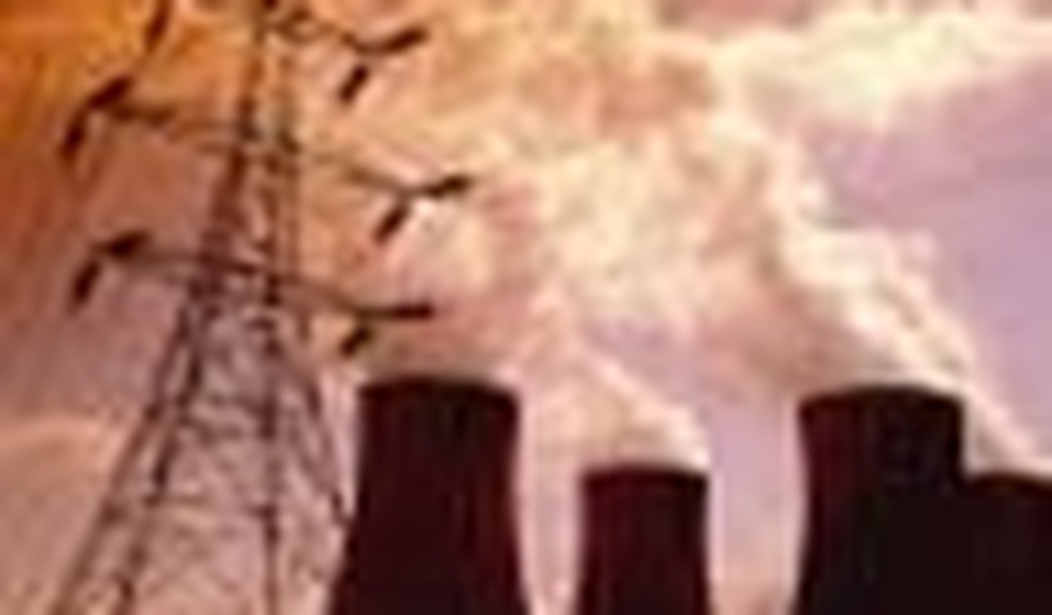The United States may soon go on the Mother of All Fad Diets. But this one isn’t about losing 10 pounds a week by eating grapefruit or joining the ranks of the Hollywood waifs by drinking some strange potion. No, this snake oil isn’t being hawked on late-night television; it’s coming straight from the halls of Congress. Call this one the CO2 Reduction Diet.
Unlike most diets that are voluntary, this one would be forced on us by government. But as with many other diets, our wallets would be all that ends up skinny.
Carbon dioxide is the latest fear being peddled by environmental activists. Never mind that climate has been changing forever, from cooler to warmer and back again, and that studies show solar activity has much more to do with climate than the miniscule amount of CO2 generated by humans.
So what do some in Congress want to do? Put us all on a CO2 diet. The problem is that energy without CO2 is kind of like a diet without carbohydrates — which are, in fact, vital to a nutritious diet. But the CO2 diet is worse: The government is restricting how energy can be produced, right as the economy recovers and energy demands soar. Indeed, the U.S. government projects a 40 percent increase in electricity demand in the next 25 years.
Knowing such a strategy is unsustainable, green activists have taken a page from the anti-carb playbook. Americans showed they were prepared to shell out for expensive carb substitutes. Now activists are betting that America is ready to pay big for alternative energy.
But there is one key difference. While there is no affordable, sustainable alternative to replace carbs as part of a balanced, nutritional diet, nuclear power can be just that for the CO2 diet.
Despite being demonized itself for the better part of three decades, nuclear power has survived. Today 104 commercial nuclear power plants provide the U.S. with 20 percent of its electricity. These plants account for over 70 percent of America’s CO2-free electricity. The U.S. Navy uses nuclear reactors to power its submarines and aircraft carriers.
Yet despite the promise of nuclear power, many still raise concerns about moving too quickly toward using more of it. These concerns generally revolve around three things: safety, waste, and cost.
Nuclear energy in the U.S. has a sound track record on safety. No one has ever died as a result of a commercial nuclear power accident in the U.S. The closest the industry has ever come to having such an accident, the 1979 incident at Three Mile Island, resulted in no deaths. In fact, the reactor’s safeguards worked as designed.
Nevertheless, some activists falsely equate Three Mile Island with Chernobyl to create the illusion of danger at home. But it’s an apples-to-oranges comparison. The Chernobyl accident resulted from human error and poor design, something that simply could not happen in a modern nuclear power station. U.S. plants are fundamentally different from Chernobyl, and technological safeguards would prevent any meltdown that could result from human error.
Another political sticking point is nuclear waste. Undoubtedly, Yucca Mountain — which has no scientific or technological barriers, only political — is crucial to resolving the issue and must be opened. Beyond that, a more practical and comprehensive approach to managing spent nuclear fuel would include a combination of geological storage, interim storage, and recycling.
Recycling nuclear waste was suppressed by politics, not the market. In 1977, President Carter dealt the U.S. nuclear industry one of its greatest setbacks by banning commercial recycling in the U.S.
Recycling spent nuclear fuel would help the U.S. and the world to reduce the volume of high-level nuclear waste and recover vast amounts of energy remaining in spent nuclear fuel. The method used in France, which gets 80 percent of its power from nuclear plants, could yield enough energy from the spent fuel in the U.S. today to light every household in the country for 12 years. (And that method, by the way, was pioneered in the U.S.)
A third cause for concern is cost. Yet despite decades of over-regulation that drove up construction costs — which ultimately were passed on to the ratepayer, as all regulatory costs are — nuclear power has remained competitive with other energy sources.
Today, the costs of building a new nuclear reactor appear high, with price tags in the $4 billion to $6 billion range. But a modern reactor could last up to 80 years and is very inexpensive to maintain and fuel. Nuclear reactors provide stable and reliable long-term energy answers.
If the government is fixated on the CO2 Reduction Diet, at least it has an effective means to an end in nuclear energy. If government doesn’t stand in its way, nuclear energy can help America and the world meet its clean, safe, and affordable energy demands.
Nicolas Loris is a researcher and Jack Spencer is a research fellow in nuclear energy at the Heritage Foundation.









Join the conversation as a VIP Member